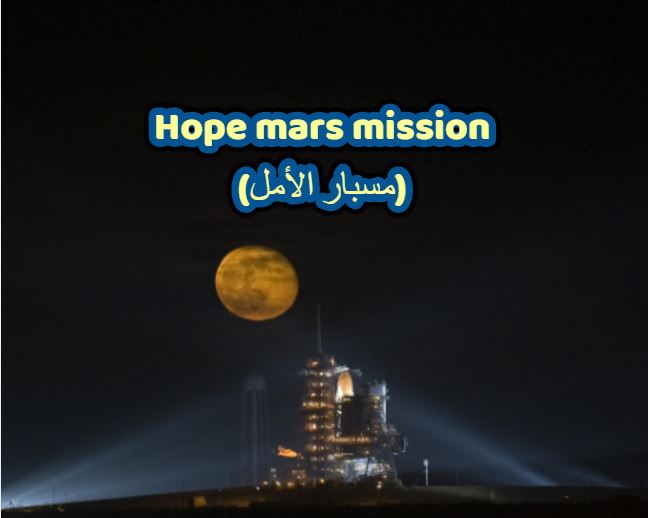Hope mars mission 2020- UAE first interplanetary mission
The Hope Mars Mission or Hope is a planned space exploration probe mission to Mars to be launched on 14 July 2020 and is also known as the Emirates Mars Mission. It was built by the Emirates’ Mohammed Bin Rashid Space Center and the University of Colorado Boulder, Arizona State University , and the University of California, Berkeley.
The mission is scheduled to launch from Japan on a Mitsubishi H-IIA booster on the 14 July 2020 window at 20:51:27 UT (15 July at 12:51:27 UAE time 5:51:27 JST).
The experiment will investigate routine and seasonal weather cycles, lower atmospheric weather phenomena, such as storm dust, and how the weather in Mars varies. It will try to answer the scientific questions as to why martian atmosphere lacks hydrogen and oxygen and dramatic climate changes.
The “Mission Hope Mars,” to be launched on 15 July, is under way since 2014 by the United Arab Emirates.The mission is not to land on Mars but to circle the planet in order to research the dynamics of the atmosphere for a whole Martian year (687 days of the Earth).
Mission is called Hope or Al-Amal, and is scheduled to arrive in Mars in February 2021, which is also the 50th anniversary of the formation of the United Arab Emirates.
Spacecraft Configurations
The Emirates Mars Mission has a total weight of 1500 kg, including fuel. It is a 2,37 m long, 2,90 m high hexagonal prism, made of aluminum honeycomb panels with composite faces with three solar panel wings on top. The solar panels provide the 600 W batteries that charge the spacecraft.The requirement for spacecraft is 477 W. The transmissions are the X-band, with a 1.5 m high-gain directional dish antenna positioned on the top deck of the spaceship. It will enable communication rates of 1,6 Mbps to reach its furthest point at the lowest possible Earth-Mars distance to 250 kbps. Three low-gain antennas are also available.
It is mounted on one side of the spacecraft with three scientific instruments. The Emirates eXploration Imager (EXI) is an Emirates Mars Ultraviolet Spectrometer (EMUS), the Far UV Spectrometers and the Emirates Mars Infrarot Spectrometers (EMirS) and FTIR scanning spectrometers with high-resolution multi-band (visible and UV) camera.
Propulsion is provided by 4 to 6 120-N thrusters installed on the bottom of the spaceship using monopropellant hydrazine and a GHe pump tank with control of movement and attitude via 8 to 12 5-N thrusters and a set of reaction wheels. Star trackers and coarse Sun sensors provide the knowledge of position and orientation.



